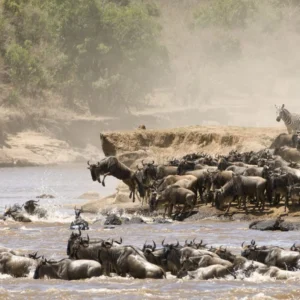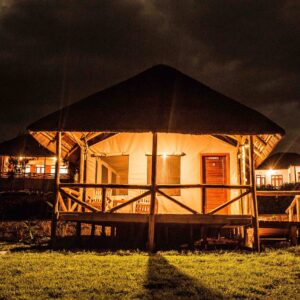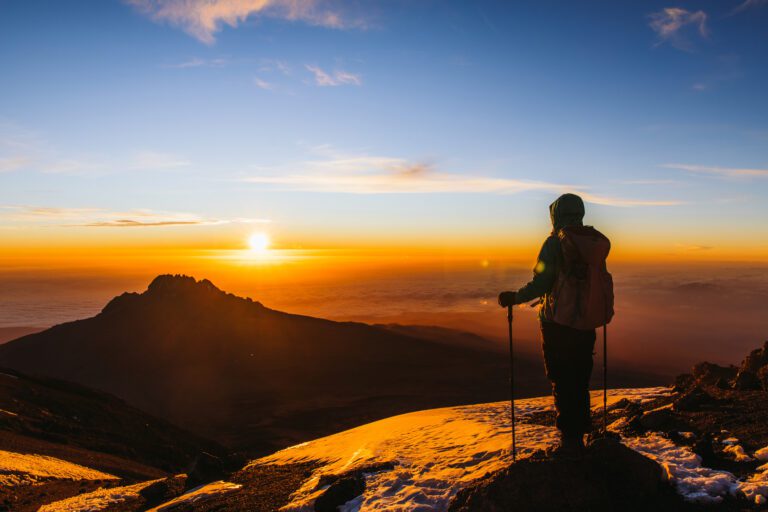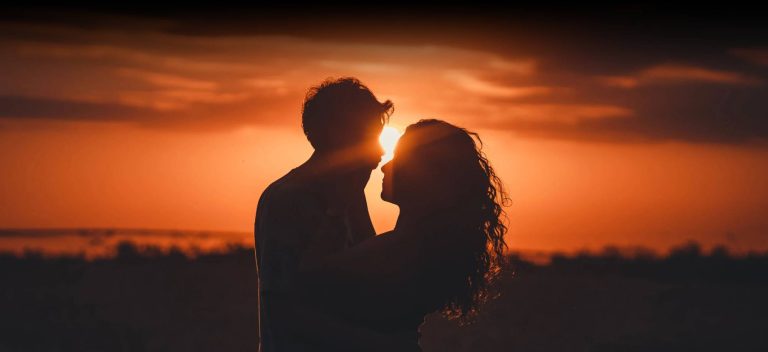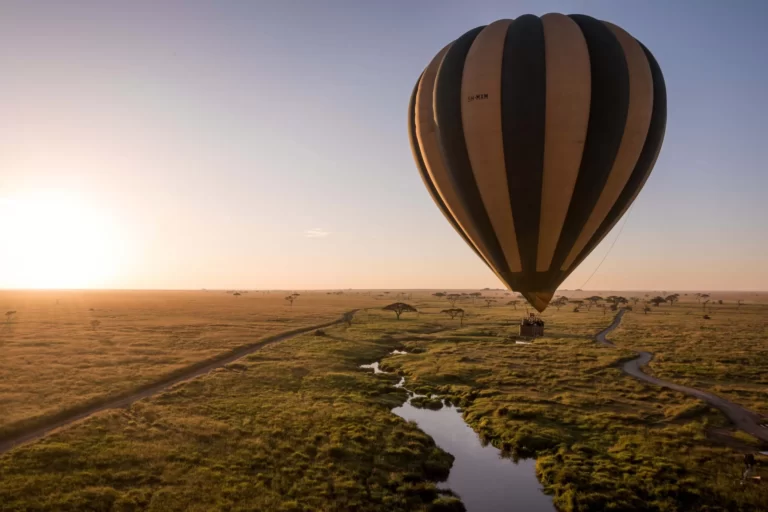Top Reasons why Mount Kilimanjaro Is A Top Tourist Attraction Post Pandemic?
The world stood still during the pandemic, and with it, global travel. As borders reopened and confidence slowly returned, a shift in traveler priorities emerged. Rather than crowded cities or conventional resorts. A strong desire for open spaces, meaningful experiences, and challenging adventures has come to the forefront. In this evolving landscape, Mount Kilimanjaro, Africa’s iconic “Roof of Africa,” has solidified its position as a top tourist attraction. It’s inherent allure, combined with adaptations made post-pandemic. Has created a compelling draw for adventurers worldwide.
While specific on-the-ground changes to the Kilimanjaro ecosystem due to the COVID-19 pandemic, not been extensively documented in the provided search results. The pandemic has impacted the tourism sector and related infrastructure. With a shift towards implementing health and safety protocols for visitors. Including those related to climbing Kilimanjaro. Mount Kilimanjaro has seen a surge in tourism post-pandemic due to a strong recovery of the tourism sector. Enhanced safety protocols have been implemented by the park, and the unique allure of its natural beauty and trekking experience. Tanzania’s tourism sector, including Kilimanjaro, has shown significant resilience and growth, with visitor numbers and earnings increasing substantially in recent years.
1. Post-Pandemic Revival and Safety: Rebuilding Trust
One of the most significant reasons for Kilimanjaro’s post-pandemic appeal, the dedicated effort towards post-pandemic revival and safety. Tanzania was notably proactive in reopening its borders, and tour operators on Kilimanjaro quickly adapted to new health and safety protocols. This included enhanced hygiene practices, regular health monitoring of staff and clients, and adjustments to trekking procedures to ensure social distancing where feasible. The emphasis on robust safety measures, coupled with a growing global confidence in travel. Allowed Kilimanjaro to welcome back climbers with renewed assurance. The resilience shown by the Tanzanian tourism sector and its commitment to traveler well-being have played a crucial role in its recovery.
2. Advanced Trekking Infrastructure: Enhancing the Journey
While the core challenge of Kilimanjaro remains, the advanced trekking infrastructure has continually improved. Making the climb more accessible and safer. This includes well-maintained trails across various routes, improved ranger stations, and clearer trail markings. Many reputable operators have invested in better quality tents, equipment, and even solar-powered charging stations at campsites, enhancing comfort and convenience. These improvements, combined with established emergency evacuation procedures and medical support on the mountain. Make the arduous journey more manageable and less daunting for post-pandemic travelers seeking a well-supported adventure.
3. Unparalleled Natural Beauty and Uniqueness: A Feast for the Senses
Mount Kilimanjaro’s unparalleled natural beauty and uniqueness, timeless draws that have become even more appreciated in a world emerging from confinement. As the world’s tallest free-standing mountain, its solitary grandeur is breathtaking. The climb takes trekkers through five distinct ecological zones – from lush rainforests brimming with biodiversity to alpine deserts and ultimately glacial landscapes at the summit. This remarkable ecological diversity offers a visual and sensory feast. Provides a profound connection with nature that many craved during lockdowns. It’s an experience unlike any other, offering ever-changing vistas and a true sense of traversing multiple worlds.
4. Less Crowded Experience: Serenity on the Slopes
While Kilimanjaro remains popular, the initial phases of post-pandemic recovery offered a potentially less crowded experience compared to pre-2020 peaks. With global travel still recalibrating, climbers could sometimes find more solitude on the trails and at campsites. This reduced footfall often translates into a more intimate and serene encounter with the mountain. Allowing for deeper personal reflection and a stronger connection with the natural environment. As visitor numbers steadily increase, choosing less popular routes or off-peak seasons can still offer a greater sense of quietude.
5. Accessibility and Travel Ease: Gateway to Adventure
Despite its remote location in East Africa, Kilimanjaro benefits from relatively good accessibility and travel ease. Kilimanjaro International Airport (JRO), well-connected to major international hubs, making direct flights relatively straightforward. Furthermore, the robust tourism infrastructure in Arusha, the gateway city. Provides a comfortable and convenient starting point for expeditions. The relatively stable political environment in Tanzania also contributes to a sense of security and ease for international travelers. Making the logistics of reaching this distant peak less complicated than some other high-altitude destinations.
6. Appreciation and Readiness of Local Support: A Warm Welcome Back
The pandemic severely impacted the livelihoods of thousands of Tanzanians who depend on tourism. The appreciation and readiness of local support teams – guides, porters, cooks, and other staff – to welcome back tourists have been palpable. Climbers often report feeling a strong sense of gratitude from the local crews, who eager to return to work and share their mountain with the world. This mutual appreciation fosters a uniquely warm and supportive environment on the climb. Making the human aspect of the journey as rewarding as the physical challenge. Mount Kilimanjaro’s three peaks were formed after volcanic eruptions millions of years ago. One volcanic cone, Shira, is now extinct and eroded, while the other two, Mawenzi and Kibo, ‘melted’ together after subsequent eruptions. Kibo is now the highest with its famous Uhuru peak at almost 6000m above sea level.
7. A “Bucket List” Achievement: Fulfilling Deferred Dreams
For many, climbing Kilimanjaro has long been a “bucket list” achievement. The introspection and limitations imposed by the pandemic often led people to re-evaluate their life goals and prioritize experiences they had postponed. With the easing of restrictions, there’s been a surge in individuals determined to fulfill these deferred dreams. Kilimanjaro represents not just a physical challenge but a symbolic overcoming of adversity, resonating deeply with the collective experience of navigating the pandemic. It’s a powerful statement of resilience and personal triumph. As an impressive and awe-inspiring landmark, Mount Kilimanjaro has become a popular tourist destination. Every year, thousands of people ascend to its peak to catch a glimpse of its towering snow-capped peaks and take in the breathtaking views at the summit.
8. Wildlife Encounters: Beyond the Summit
While primarily a climbing destination, Kilimanjaro National Park, especially its lower slopes, offers unique wildlife encounters. Trekkers often spot colobus monkeys, various antelopes, and a rich array of birdlife within the rainforest and heath zones. The park, also home to larger mammals like elephants and buffalo, though these, less frequently seen by climbers. This adds another layer of natural appeal to the journey. Transforming it from a pure mountaineering feat into a broader African wilderness experience. Especially for those extending their trip with a safari.
9. High-Altitude Challenge: The Ultimate Test
For adventurers and thrill-seekers, the high-altitude challenge of Kilimanjaro is a major draw. Reaching nearly 6,000 meters (19,341 feet) without technical climbing equipment makes it accessible to a wider range of trekkers, yet it remains a formidable test of physical and mental endurance. The battle against thinning air and extreme cold, culminating in the pre-dawn summit push, provides an intense sense of accomplishment that few other activities can rival. This inherent challenge continues to attract those seeking to push their limits and earn a truly hard-won reward.
Climbing Mount Kilimanjaro, while generally considered safe with a low mortality rate (around 0.03%), carries inherent risks, with the primary causes of death being altitude sickness (Acute Mountain Sickness, or AMS, and its severe forms like HAPE and HACE), heart attacks from pre-existing conditions, and rarer incidents like rockfalls, particularly on the Western Breach route. An estimated 3 to 10 deaths occur annually among the approximately 30,000 to 50,000 climbers who attempt the ascent each year.
10. International Recognition: A Global Icon
Mount Kilimanjaro enjoys immense international recognition. As Africa’s highest peak and one of the “Seven Summits” (the highest mountains on each continent), it holds a prestigious place in mountaineering and travel circles. Its iconic snow-capped peak, visible from miles around, is a powerful symbol of Africa’s natural grandeur and has been featured in countless documentaries, films, and travel publications. This global prominence ensures a continuous stream of aspiring climbers, drawn by its legendary status and the allure of standing on top of a continent, for rewarding adventures.
What are some of the specific things that have changed on Kilimanjaro since the pandemic?
Health and Safety Protocols. Tanzania, including the Kilimanjaro region, has maintained its openness for tourism since the pandemic began, but implemented Standard Operating Procedures (SOPs) to manage COVID-19 in tourism operations. These include requirements at airports (negative test results, temperature checks, social distancing, masks) and in hotels (masks, temperature checks, hand sanitizer, social distancing).
Changes in Entry Requirements. While initially stricter, rules for entry into Tanzania (and thus for Kilimanjaro expeditions) have evolved, with vaccinated individuals no longer requiring mandatory COVID-19 tests for entry. some of the specific things that have changed on Kilimanjaro since the pandemic, however, travelers still need to be aware of restrictions imposed by their home countries or subsequent destinations.
Conclusion:
Mount Kilimanjaro’s enduring appeal in the post-pandemic era is a testament to its intrinsic natural wonders, the profound personal challenge it offers, and the robust efforts by the Tanzanian tourism industry to ensure safe and memorable experiences. It stands as a beacon for those seeking not just a trip, but a transformative adventure, a connection with nature, and a powerful symbol of human resilience in a changing world.

